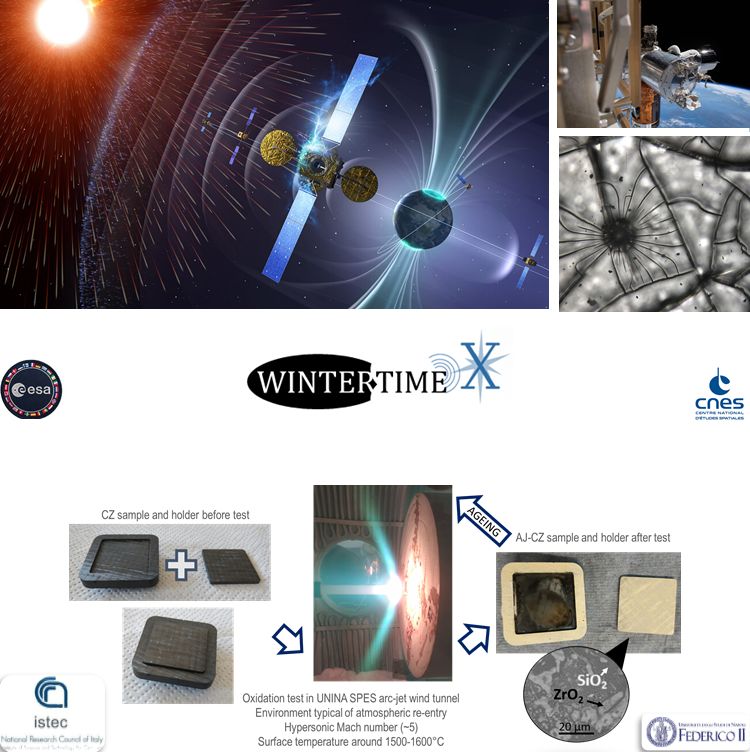This website uses cookies so that we can provide you with the best user experience possible. Cookie information is stored in your browser and performs functions such as recognising you when you return to our website and helping our team to understand which sections of the website you find most interesting and useful. More information in our Privacy Policy
WINTERTIME
Low Earth orbit environment ageing effect on Ultra-High Temperature Ceramic Matrix Composites
Principal investigator: Luca Zoli
Involved personnel: Diletta Sciti
Starting date: 05/11/2020
Duration: 30 months
Call: AO-2020-Euromaterialageing
Project Coordinator: European Space Agency (ESA) and The National Centre for Space (CNES) in France.
Partnership: ESTEC, CNES, ISTEC, UNINA, DLR, AAC Research, Univ. Catania, BAM, HEVS. Azimut space, Tecniker, OEAW, UNiv. Bristol, Arceon, Nematx, Univ. Southampton, Univ. Coimbra, EMPA
Official website: link
The European Space Agency (ESA), in collaboration with the French national center for space studies (CNES), as part of the AO-2020-Euromaterialageing call, promotes the study of the ageing of materials for applications in the low orbit atmosphere (LEO ) on Earth. To this end, ESA has selected a shortlist of projects proposing innovative materials for space application. The ESTEC laboratory will carry out a test campaign to get safety requirements of materials to be launched on the International Space Station (ISS). Using the brand new external platform (BARTOLOMEO) at ISS, the materials will be exposed to the severe conditions of LEO for a period of at least six months.
CNR-ISTEC participates in this extraordinary opportunity with the aim of studying the effect of space radiation, atomic oxygen reaction, repeated thermal cycles and potential impact of debris during a period of six months on the new class of ultra-refractory ceramic matrix materials (UHTCMC) designed and developed at the Institute of Faenza during the C3harme project. The relationship between microstructure and mechanical properties will be analyzed in depth. Emphasis will be placed on modification of the fiber / matrix interface and on irregular resistance to erosion and ablation after exposure to space, including through dedicated pre and post flight tests (arc-ject test). Such materials are candidates as potential reusable spacecraft heat shields/thermal protection systems (TPS) for Earth re-entry into the atmosphere at hypersonic speeds.
During the WINTERTIME project, ISTEC and UNINA realized scientific demonstrators (tiles) in UHTCMCs material with dimensions suitable for placing into BARTOLOMEO platform.
This project was stimulated by the need to study the new materials for extreme environments developed at ISTEC during the European C3harme project under real conditions. Sintered UHTCMCs were validated as TPS tiles for spacecraft up to TRL 5-6 at temperatures exceeding 2000 °C. The capability of UHTCMC to preserve their performance during Earth re-entry into the atmosphere after such a long period under LEO conditions is still unknown. This investigation is a great challenge and opportunity to get crucial information on UHTCMCs.
NEWS: UHTCMC Materials Have Reached the International Space Station for Ageing experiments

